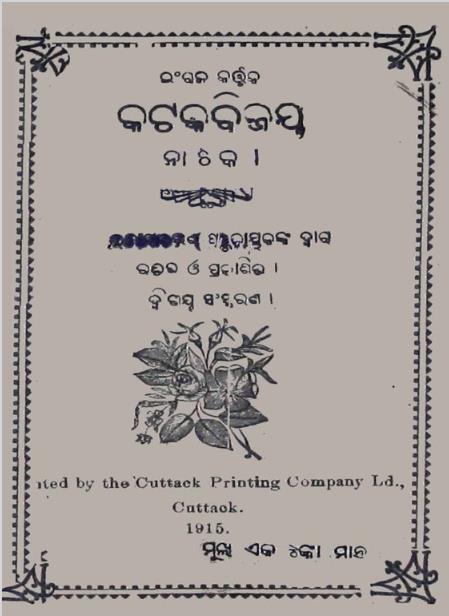Kataka Bijaya, a significant work by Bhikari Charana Patnaik, published in its second edition in 1915, stands as a testament to the rich tapestry of Odia literature and culture. This drama not only reflects the socio-political essence of the time but also integrates various layers of sub-drama that enhance the narrative and deepen the audience’s engagement. While the main plot revolves around the historical and cultural significance of Kataka (the ancient name for Cuttack), the sub-drama elements add complexity and emotional depth to the overarching theme.
At its core, Kataka Bijaya is a historical drama that celebrates the valor and resilience of the Odia people. It narrates the struggles of local rulers against foreign invasions and the overarching theme of sovereignty and identity. However, the richness of Patnaik’s work lies not only in its primary narrative but also in the sub-dramatic elements that he skillfully weaves throughout the text.
One of the most notable sub-drama arcs in Kataka Bijaya involves the interpersonal relationships and familial dynamics that unfold amid the political turmoil. Patnaik delves into the psychological intricacies of characters, portraying their aspirations, fears, and loyalties. The conflicts between characters, including misunderstandings and betrayals within families, reflect larger societal issues, such as the struggle for power and the impact of war on personal lives. This sub-drama creates a poignant juxtaposition with the main plot, allowing readers to empathize more profoundly with the characters’ motivations.
Furthermore, elements of folk tradition and local culture serve as a backdrop for the sub-drama within the text. Patnaik integrates folk tales, proverbs, and local customs, bringing vibrancy and authenticity to the narrative. These elements are not merely decorative; they enrich the dialogue and characterizations, making the context more relatable and poignant. For instance, the use of traditional Odia sayings enhances the emotional weight of the characters’ dilemmas, grounding their experiences in the cultural ethos of the time.
Another significant aspect of the sub-drama in Kataka Bijaya is its exploration of gender roles and societal expectations. The female characters in Patnaik’s drama are not passive bystanders; they play critical roles in influencing the events around them. Their strength, wisdom, and agency reflect the changing attitudes towards women in society, mirroring the broader socio-political changes occurring in Odisha during the early 20th century. This nuanced portrayal adds another layer to the drama, as the struggle for autonomy and respect intersects with the larger themes of bravery and resistance.
Books Info
| Books name | Kataka Bijaya / କଟକ ବିଜୟ |
| Author | Bhikari Charana Patnaik |
| No Of pages | 106 |
| Publisher | NA |
| Publication | 1915 |
| Printed At | Cuttack Printing Comapy Ld. |
| Distributor | NA |

